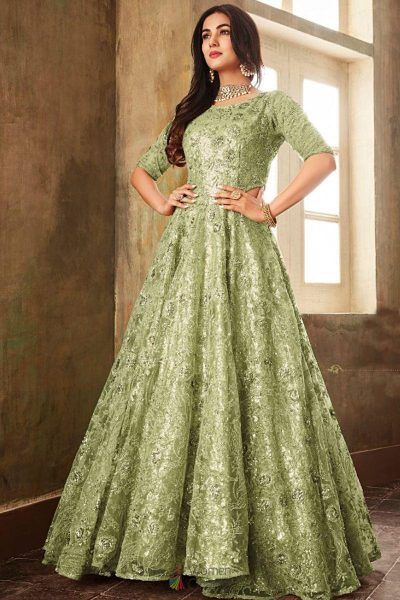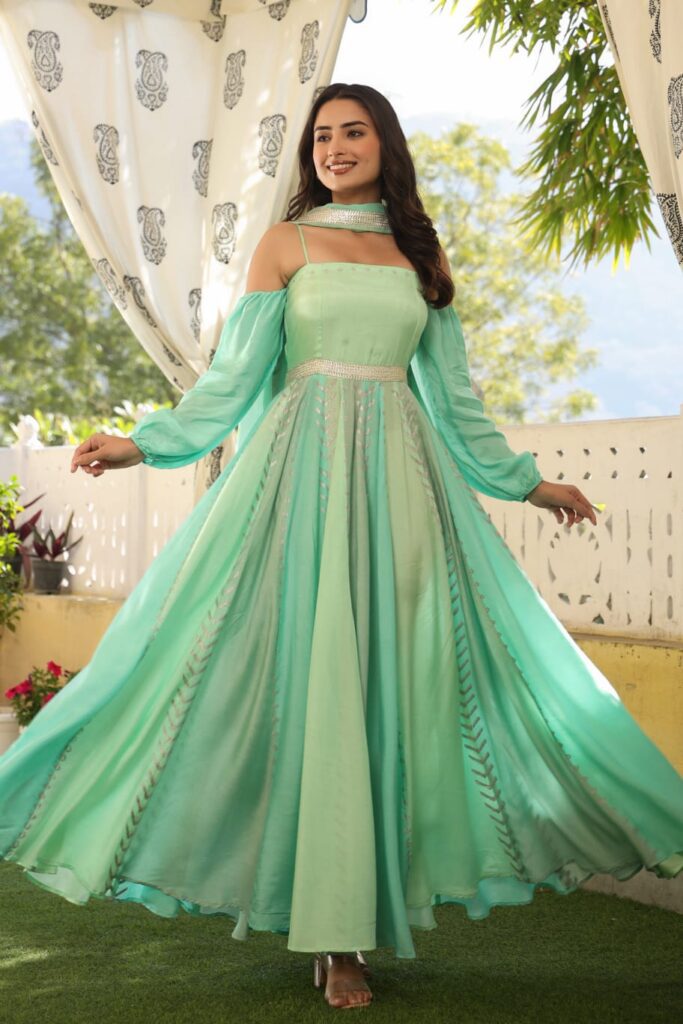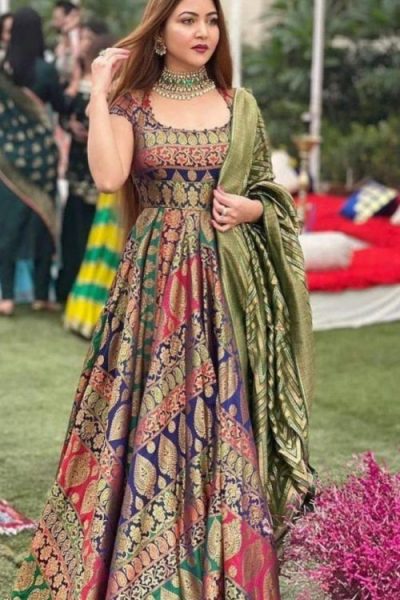Table of Contents


Introduction
Traditional and ethnic wear hold a special place in the world of fashion. They are more than just clothing; they are a reflection of culture, heritage, and identity. In a world that is increasingly becoming globalized, traditional attire serves as a reminder of our roots and the rich history that shapes who we are. This blog explores the significance of traditional and ethnic wear, the diversity of styles across different cultures, and how these garments are being embraced in contemporary fashion.
The Significance of Traditional and Ethnic Wear
Traditional and ethnic wear is deeply intertwined with cultural heritage. These garments often carry historical significance and are imbued with symbolic meanings. They are worn during important cultural events, festivals, and ceremonies, making them an essential aspect of cultural identity.
Cultural Expression:
- *Celebration of Heritage:* Traditional attire is a celebration of one’s heritage and ancestry. It connects individuals to their cultural roots and allows them to honor their lineage.
- *Symbolism:* Many traditional garments have symbolic meanings, representing values, beliefs, and even social status. For instance, the colors, patterns, and motifs used in these garments often have cultural significance.
Cultural Preservation:
- *Passing Down Traditions:* Traditional clothing is often passed down through generations, serving as a tangible link to the past. It helps preserve cultural traditions and stories.
- *Craftsmanship:* Many traditional garments are handcrafted, showcasing the skills and craftsmanship of artisans. This not only preserves traditional crafts but also supports local economies.
Global Influence
:
- *Fusion Fashion:* As cultures interact and blend, traditional wear has found its place in global fashion. Designers incorporate traditional elements into modern designs, creating fusion fashion that appeals to a broader audience.
- *Cultural Exchange:* Wearing traditional attire from different cultures can foster understanding and appreciation for cultural diversity. It allows people to experience and celebrate the richness of different traditions.
Diversity of Traditional and Ethnic Wear
Traditional and ethnic wear varies widely across different cultures, each with its unique styles, fabrics, and techniques. Here’s an exploration of some iconic traditional attire from around the world:
Indian Traditional Wear:
- Saree: The saree is a versatile and elegant garment worn by women across India. It consists of a long piece of fabric draped in various styles. The saree is known for its rich fabrics, intricate embroidery, and vibrant colors. Different regions in India have distinct styles, such as the Kanjeevaram from Tamil Nadu, the Banarasi from Varanasi, and the Bandhani from Gujarat.
- Lehenga:The lehenga is a traditional skirt paired with a blouse (choli) and a dupatta (scarf). It is popular for weddings and festive occasions. Lehengas can range from simple cotton to heavily embroidered silk, often featuring zari, zardozi, and stone work.
- *Kurta-Pajama and Sherwani:* For men, traditional attire includes the kurta-pajama, a comfortable and stylish combination. The sherwani, a long coat-like garment, is often worn during weddings and formal events.
Japanese Traditional Wear:
- Kimono: The kimono is a traditional Japanese garment characterized by its long sleeves and wide sash (obi). It is made from silk and features intricate designs and patterns. Kimonos are worn on special occasions such as weddings, tea ceremonies, and festivals.
- *Yukata:* A more casual version of the kimono, the yukata is made from cotton and is worn during summer festivals and casual gatherings.


Chinese Traditional Wear:
- *Qipao/Cheongsam:* The qipao, also known as cheongsam, is a form-fitting dress with a high collar and side slits. It originated in the 1920s in Shanghai and is known for its elegant silhouette and beautiful embroidery.
- *Hanfu:* Hanfu is a traditional dress of the Han Chinese people, featuring flowing robes and wide sleeves. It has seen a resurgence in recent years as a symbol of cultural pride.
African Traditional Wear:
- *Dashiki:* The dashiki is a colorful garment worn in West Africa. It features intricate embroidery and is often made from cotton or silk. The dashiki is worn by both men and women and is a symbol of African heritage.
- *Kente Cloth:* Kente is a traditional Ghanaian fabric known for its vibrant colors and intricate patterns. It is handwoven and used to create various garments, including robes, stoles, and dresses.
Middle Eastern Traditional Wear:
- *Abaya:* The abaya is a long, flowing cloak worn by women in many Middle Eastern countries. It is often black and can be adorned with embroidery, beads, or sequins.
- *Thobe:* The thobe is a traditional garment worn by men in the Middle East. It is a long, ankle-length robe, usually made from cotton or silk.


Native American Traditional Wear:
- *Regalia:* Native American regalia is worn during ceremonies and powwows. It includes items like feathered headdresses, beaded garments, and woven textiles. Each piece of regalia has cultural and spiritual significance.
Contemporary Embrace of Traditional and Ethnic Wear
In recent years, there has been a growing appreciation for traditional and ethnic wear, both within their cultures of origin and globally. This resurgence can be attributed to a renewed interest in cultural identity, sustainability, and a desire to support local artisans.
Revival of Traditional Crafts:
- The fashion industry has seen a resurgence in traditional crafts, with designers incorporating handwoven textiles, embroidery, and other artisanal techniques into modern designs. This not only supports traditional craftsmanship but also promotes sustainable fashion practices.
Fusion Fashion:
- Fusion fashion blends traditional and modern elements, creating a unique and contemporary look. This trend allows individuals to express their cultural identity while embracing global fashion trends. Examples include pairing a traditional Indian kurti with jeans or wearing a kimono-style jacket over a Western dress.
*3. Global Runways and Fashion Shows:*
- Traditional and ethnic wear has made its way to global runways, with designers showcasing collections inspired by cultural attire. Fashion shows like the Met Gala and international fashion weeks often feature outfits that pay homage to various cultural traditions.
*4. Everyday Wear:
*
- Traditional garments are no longer reserved for special occasions. Many people incorporate elements of traditional wear into their everyday wardrobe, such as wearing a sari to work, a qipao-inspired blouse, or a kaftan as a casual dress.
*5. Cultural Appreciation vs. Appropriation:
*
- While traditional and ethnic wear is celebrated globally, it’s essential to distinguish between cultural appreciation and appropriation. Cultural appreciation involves understanding and respecting the cultural significance of traditional attire, while cultural appropriation refers to adopting elements of a culture without understanding or respecting its context.
How to Incorporate Traditional and Ethnic Wear into Your Wardrobe
Incorporating traditional and ethnic wear into your wardrobe is a beautiful way to celebrate diversity and express your cultural pride. Here are some tips to do so gracefully:
Start with Accessories:
- If you’re new to traditional wear, start with accessories. Items like jewelry, scarves, and bags can add a touch of ethnic flair to your outfit without being overwhelming.
- Mix and Match:
- Blend traditional pieces with modern clothing. For example, pair a traditional Indian kurta with denim jeans or a Western-style top with a traditional African skirt.
- Choose Versatile Pieces:
- Opt for versatile traditional pieces that can be styled in multiple ways. A kimono can be worn as a dress, a jacket, or a layering piece over other outfits.
- Respect Cultural Significance:
- When wearing traditional attire from cultures other than your own, take the time to learn about its cultural significance. This shows respect and appreciation for the culture.
- Support Local Artisans:
- Whenever possible, buy traditional garments from local artisans or ethical brands. This supports traditional crafts and ensures fair wages for the artisans.
- Experiment with Textiles and Prints:
- Traditional textiles and prints can add a unique touch to your wardrobe. Experiment with different fabrics and patterns to find what resonates with you.
![]() Conclusion
Conclusion
Traditional and ethnic wear is a celebration of culture, heritage, and identity. It offers a rich tapestry of styles, each with its unique history and significance. As we embrace global fashion, it’s essential to honor and respect the traditions that shape these garments. Whether you’re wearing a saree, a kimono, or a dashiki, traditional attire is a powerful way to express individuality and connect with cultural roots. As we continue to explore and appreciate diverse cultures, let’s celebrate the beauty of traditional and ethnic wear and the stories they tell.
![]() Call to Action
Call to Action
What is your favorite traditional or ethnic garment? Share your experiences and how you incorporate traditional wear into your wardrobe in the comments below. Follow our blog for more fashion insights and join us in celebrating the rich diversity of traditional and ethnic fashion. Let’s explore the world of traditional wear together, one garment at a time.
